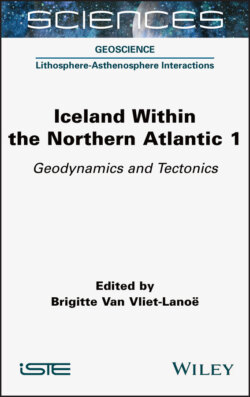Читать книгу Iceland Within the Northern Atlantic, Volume 1 - Группа авторов - Страница 17
1.2.1. The Mid-Atlantic Ridge
ОглавлениеThe MAR is a succession of ridge segments that range from the South Atlantic near Bouvet Island (latitude 54° S) to the North Atlantic, south of the Arctic Circle (latitude 87° N). In its southern part, it marks the boundary between the South American and African plates and in its northern part, it defines the boundary between the Eurasian and North American plates.
These segments are significantly offset by transform faults or zones. The two most important transform zones in the North-MAR are the Jan Mayen Fault Zone (latitude 71° N) and the Charlie–Gibbs Transform Zone (latitude 53° N), which limits to the south the North Atlantic oceanic domain sensu stricto (Figure 1.4). The Icelandic Rift, which represents the part of the ridge that emerged in Iceland, is itself currently shifted about 100 km eastward from the axis of the MAR (Chapter 2).
The North-MAR is a slow to ultra-slow ridge whose rate of expansion decreases toward the north (Le Breton et al. 2012). This rate varies from about 21 mm/year at the axis of the Reykjanes Ridge (slow ridge southwest of Iceland) to 16 mm/year at the Mohns Ridge (north of Jan Mayen). It becomes close to only 6 mm/year in the cold Arctic Ocean at the end of the ultra-slow Gakkel Ridge (Jokat et al. 2003), near the pole of rotation between the Eurasian and North American plates, located in the extreme East of Siberia. In Iceland, the rate of expansion at the axis of the ridge is of the order of 20 mm/year. The complex genesis of the North-MAR and its evolution during the Cenozoic are presented in Chapter 3 (section 3.2).
